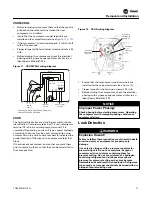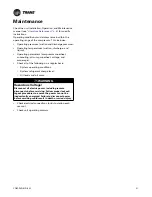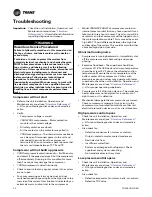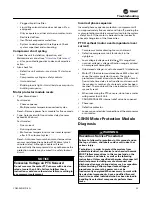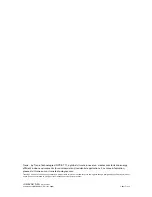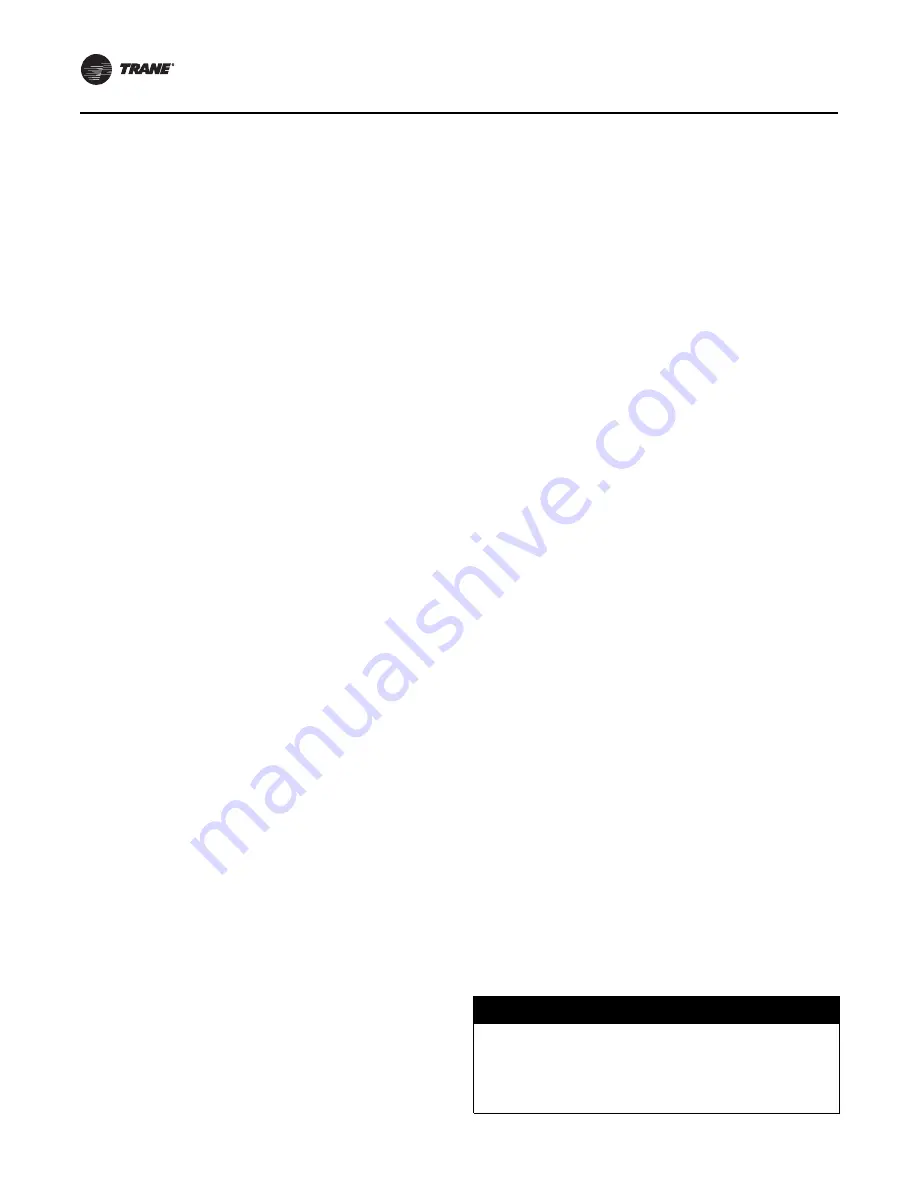
Removal and Installation
14
COM-SVN01D-EN
•
Remove oil prior to compressor removal:
–
CSHN/CSHL Compressors
•
CSHN and CSHL compressors have an oil valve
(see
) that allows oil to be
completely drained out of the compressor due to
an internal dip tube. After the refrigerant has
been recovered, pressurize the system with
nitrogen to help remove oil from the
compressor.
•
If the compressor is in a tandem or trio set, place
a catch pan under the oil equalizer rotolock
connection on the compressor to catch the oil
from the oil equalizer tube or compressor when
the oil equalizer tube is removed.
–
CSHD Compressors
•
For CSHD compressors complete, oil removal
requires using a suction or pump device through
the oil equalizer rotolock fitting, see
. Flush the suction device with clean oil prior
to use.
•
If the compressor is in a tandem set, place a
catch pan under the oil equalizer rotolock
connection fitting on the compressor to catch the
oil from the compressor when the oil equalizer
tube is removed. Refer to
for the
location of the oil equalizer rotolock connection
fitting.
Tip:
Before removing the existing tubing from the
compressor, apply flux to the joint. This will aid in
the flow of the braze material and help keep the
joint clean for rebrazing. After fluxing, heat the joint
evenly to slightly higher temperature than the
melting temperature of the filler material. At this
point, the two parts of the assembly should be
easily separated.
•
Refrigerant Connection Removal
–
Single compressor—Cut the refrigerant lines in a
convenient location that allows reassembly with
slip couplings. Then, unbraze the line from the
compressor and reuse it when the replacement is
installed.
•
When removing the compressor use both hooks
on the cap of the compressor with a spreader bar
(see
•
The lifting device must be rated to handle the
weight compressor as listed in
.
Compressor Replacement—Tandem and
Trio Compressor Sets
Definitions:
•
Tandem
—Two compressors on a single refrigerant
circuit.
•
Trio
—Three compressors on a single refrigerant
circuit.
There are special considerations that are unique to
replacing compressors in a tandem or trio set:
1. Only replace the failed compressor.
2. On tandem or trio assemblies, the suction and
discharge lines must not be modified, except for the
use of slip-joint couplings. Other modifications may
cause oil return issues and lead to compressor failure.
Cut the lines in a convenient place, remove the
compressor, and then unbraze the lines from the
compressor. On re-installation, reinstall lines to
compressor and reassemble the cut lines using a slip
coupling. Refer to
for suggested area to
cut the discharge and suction line.
Tip:
Before removing the existing tubing from the
compressor, apply flux to the joint. This will aid in
the flow of the braze material and help keep the
joint clean for re-brazing. After fluxing, heat the
joint evenly to slightly higher temperature than the
melting temperature of the filler material. At this
point, the two parts of the assembly should be
easily separated.
3. Change oil in all compressors in the tandem or trio
compressors whenever there is a failure.
a. CSHN/CSHL—Use the oil valve on the compressor.
b. CSHD—Remove the oil equalizer fitting and use a
suction or pump device to remove the oil from the
compressor through the oil equalizer tube opening.
A suction type device should be used to remove oil
from the compressor.
Important:
Some compressor tandem configurations
require a restrictor be placed in the suction
inlet to balance the oil levels. Each service
replacement compressor ships with all the
restrictors that can be used with that
compressor. The restrictors are packaged in
a bag with a label with the part number and
diameter required (see
). The part
number is X17311028010 and the internal
diameter in millimeters is Ø31. The
restrictor is also marked on the face with
both the extension number, last three digits
of the part number, and diameter. For the
previous example, the restrictor would be
marked 010-31. Without the proper
restrictor installed the compressor oil level
balance will not be correct. Refer to the
instruction sheet included with the service
replacement compressor for the correct size
and location of the restrictor.
NOTICE
Incorrect Restrictor Size and Location!
Failure to install the correct size restrictor or in the
correct position will lead to improper oil levels in the
compressor. This could result in a compressor failure
due to low oil level.

















